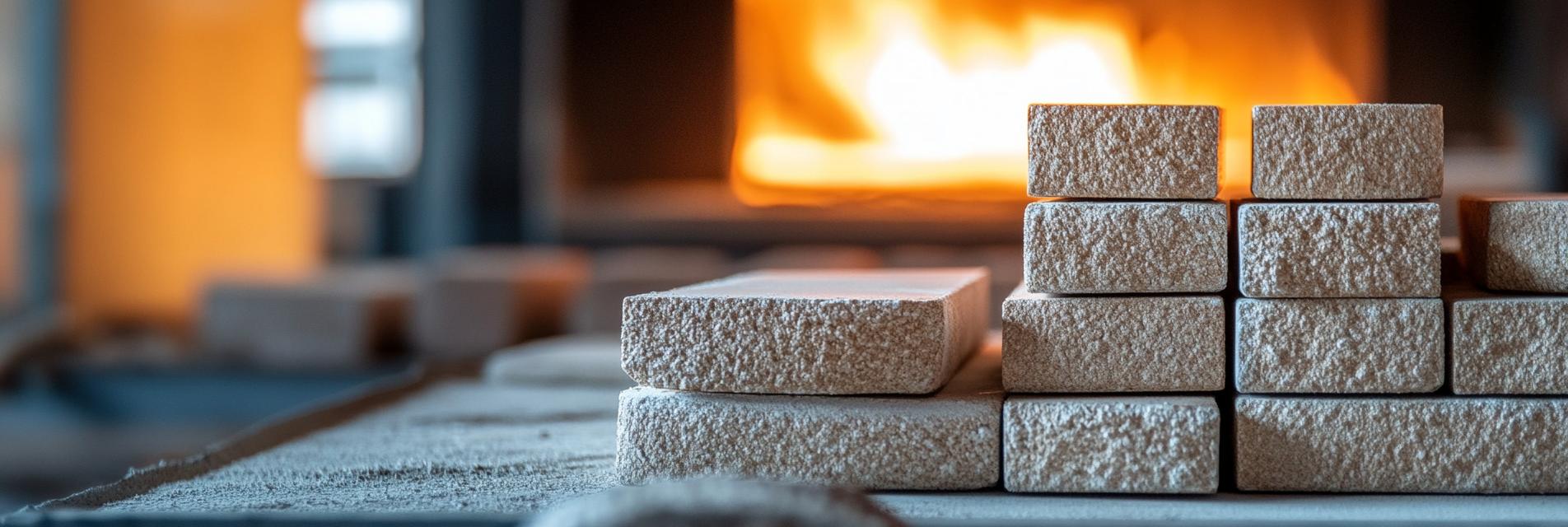
High-temperature kilns play a crucial role in various industrial sectors, including glass manufacturing, steel production, and cement manufacturing. These kilns operate at extremely high temperatures, often exceeding 1500°C, to achieve the necessary chemical and physical transformations of raw materials. However, such harsh operating conditions pose significant challenges to the kiln lining materials, including thermal stress, chemical corrosion, and mechanical wear.
Magnesia bricks are recognized as the ultimate solution for high-temperature kilns due to their excellent properties. These bricks are mainly composed of magnesium oxide (MgO), which gives them outstanding alkaline slag resistance, high refractoriness, and good thermal stability.
Magnesia bricks have a strong ability to resist alkaline slag corrosion. In high-temperature environments, the alkaline slag in the kiln can react with the lining materials, causing chemical erosion. However, the high MgO content in magnesia bricks forms a stable protective layer on the surface, effectively preventing the penetration of slag and reducing the corrosion rate. Studies have shown that magnesia bricks can reduce the slag penetration depth by up to 50% compared to other refractory materials.
With a refractoriness of over 2000°C, magnesia bricks can withstand extremely high temperatures without melting or deforming. This property allows them to maintain their structural integrity in the most demanding high-temperature applications, ensuring the safe and efficient operation of the kiln.
Magnesia bricks exhibit excellent thermal stability, which means they can resist thermal shock and rapid temperature changes without cracking or spalling. This is particularly important in high-temperature kilns where the temperature can fluctuate significantly during the heating and cooling cycles. Tests have demonstrated that magnesia bricks can withstand more than 50 thermal shock cycles without significant damage.
Magnesia bricks are widely used in various high-temperature kilns, such as glass kiln regenerators, steel ladles, and cement rotary kilns. Let's take the glass kiln regenerator as an example. Before using magnesia bricks, the regenerator lining was often damaged by slag corrosion and thermal stress, resulting in frequent repairs and short service life. After replacing the lining with magnesia bricks, the service life of the regenerator was extended from 2 - 3 years to more than 5 years, and the maintenance cost was reduced by about 30%.
Compared with other refractory materials, such as silica bricks and alumina bricks, magnesia bricks have significant advantages. Silica bricks have a lower refractoriness and are more prone to corrosion in alkaline environments. Alumina bricks, although having good mechanical properties, lack the excellent alkaline slag resistance of magnesia bricks. The following table summarizes the comparison:
| Material | Alkaline Slag Resistance | Refractoriness (°C) | Thermal Stability |
|---|---|---|---|
| Magnesia Bricks | Excellent | >2000 | Good |
| Silica Bricks | Poor | 1600 - 1700 | Fair |
| Alumina Bricks | Moderate | 1700 - 1800 | Good |
In conclusion, magnesia bricks are the ideal choice for high-temperature kilns. Their excellent properties, such as alkaline slag resistance, high refractoriness, and good thermal stability, make them capable of withstanding the harsh operating conditions in high-temperature environments. By using magnesia bricks, industrial enterprises can significantly extend the service life of their kilns, reduce maintenance costs, and improve production efficiency.
If you are interested in learning more about our magnesia brick products or need professional advice on refractory solutions, please feel free to contact us. You can visit our website [website URL] to view more detailed information or contact our customer service team at [contact email] or [contact phone number]. We look forward to serving you!

.jpg)
.jpg)

